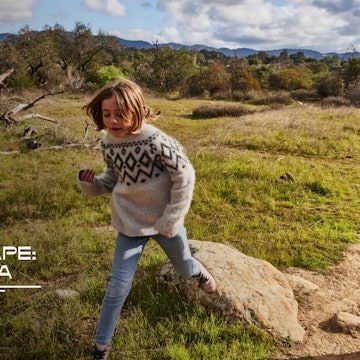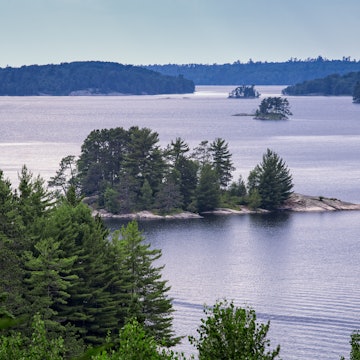

Ecola State Park is just one of many incredible parks scattered along the Oregon Coast. Jordan SIemens/Getty Images
If you've ever struggled to choose between a cabin (or tent) in the woods and a seaside getaway, you’ll love Oregon’s Coast – especially in the summer. This 363-mile-long stretch of Pacific wonderland is not a typical beach destination.
Sure, plenty of sandy shores and rocked-in coves exist, with seafood shacks and cozy ocean-facing inns. However, most of the region is covered by massive expanses of old-growth forests – many of which are on state- or federally-protected land – making it an equally ideal place for hiking and camping or making sandcastles and taking long walks on the beach.
Sound like your kind of place? We thought so. Here’s what you need to know to make the most of your summer vacation in this enchanting stretch of Pacific paradise.
Step 1: Choose where to base yourself
The Oregon Coast can be broken up into three segments: the North Coast, the Central Coast and the South Coast. For many people, it makes the most sense to stay in one of the larger hubs and take day trips to area highlights. Alternatively, you can start in the north and drive all the way to the south (or vice versa), spending a few nights in each region before continuing your voyage. Here are a few great options.
Astoria
Vibes: The northernmost city on the Oregon Coast – and Oregon’s oldest city – Astoria is full of beautiful Victorian homes, some of which have been transformed into hotels and museums.
Do: Astoria is a hotspot for fans of the ‘80s cult film The Goonies, which was filmed right in town. Plenty of people make a pilgrimage to the city to see filming locations, including the so-called “Goonies House” and to learn about the state’s film industry at the Oregon Film Museum. Astoria is also a great base for fans of history and nature: Fort Stevens State Park, the site of the Peter Iredale shipwreck, is just outside of town, as is Fort Clatsop, where members of the U.S. Army's Corps of Discovery (aka the Lewis and Clark Expedition) spent the winter of 1805–1806.
Eat: Sample Oregon’s famous albacore tuna, breaded, fried and served up with thick-cut English-style fries at Bowpicker Fish & Chips, a walk-up window housed in a converted gillnet boat. For a fancy affair, head to Fedé Trattoria Astoria, which serves handcrafted Italian dinners made primarily from local ingredients.
Stay: For some of the best views in town, book a night at the Cannery Pier Hotel and Spa, situated at the end of a pier right in the river, next to the 4-mile-long Astoria-Megler Bridge.

Newport
Vibes: In the heart of the Central Coast region, Newport has all the trappings of an Oregon Coast getaway town – lots of independent shops, restaurants and boutique hotels – plus a thriving fishing industry that gives it a bit of a gritty edge. It’s also Oregon’s primary hub for marine science research.
Do: Newport is a great place to get kids interested in the natural world. Don’t miss the Oregon Coast Aquarium, where Free Willy star Keiko the orca prepped for his return to the wild, and the Hatfield Marine Science Center, where guests of all ages can get a hands-on introduction to life under the sea (yes, there are touch tanks).
Eat: You won't find seafood much fresher than what’s served up at Local Ocean, which sources everything from the crab used to craft its Dungeness crab cakes to the razor clams in its chowder from local fishers. For a fancy lunch or dinner, make your way to Clearwater Restaurant to enjoy fresh seafood, salads and cocktails while you take in views of Yaquina Bay.
Stay: Literature lovers take note: every room at the cozy Sylvia Beach Hotel is inspired by a different author. It's closed for renovations but plans to reopen by summer 2025.
Coos Bay
Vibes: Coos Bay is the biggest city on the Oregon Coast, and while it still feels very much like a town, it’s got plenty of great hotels and restaurants within a short distance of top spots for outdoor recreation.
Do: Head up to the Oregon Dunes National Recreation Area (which inspired the Dune book and films) for an OHV adventure. Then make your way south to Shore Acres State Park to wander through a beautifully manicured garden or take in views of waves crashing against massive cliffs.
Eat: Pair beer and seafood with bay views at 7 Devils Waterfront Alehouse or sit down to a Cornish pasty at one of the live-edge tables at The Tin Thistle.
Stay: Spend a night at the whimsical Itty Bitty Inn, a budget-friendly spot with five themed rooms (including a Star Trek Room and an Oregon Trail Room). You can even borrow a cruiser bike and a helmet at no extra cost.

Step 2: Book your accommodations
Budget is a big consideration when figuring out where to stay on the Oregon Coast, and room rates typically skyrocket in the busy July and August peak season. There are plenty of fancy (and spendy) hotels along the coast, many of which have direct beach access, but if you don’t plan to spend much time in your room, you may be better off trading in direct beach access for a simple budget motel or a vacation rental.
Camping is a great option, but it’s wildly popular. If you plan to camp (or stay in a yurt) in one of the many Oregon State Parks up and down the coast, it’s a good idea to start looking in the winter — reservations go live six months in advance, and summer weekend slots often book up soon after they become available. Find out more about Oregon's seasonal events and prices in our guide to the best time to visit.

Step 3: Pick the best things to do on your summer trip to the Oregon Coast
Cannon Beach on the North Coast is popular among day trippers from Portland, with its compact main street lined with art galleries and cafes. On the south end of town, Haystack Rock is a massive sea stack that doubles as a home for tufted puffins. Bring your binoculars.
A short drive from Newport on the Central Coast, Depoe Bay is the place to go for summertime whale-watching. A group of gray whales live here in the summer, and they’re easy to spot from the picture windows at the Oregon State Parks Whale Watching Center or aboard one of Whale Research EcoExcursions’ whale-watching cruises.
Oregon summers are a dream for hikers, and the fleeting warm-and-dry season is the perfect time to hike up to the top of Humbug Mountain near Port Orford. The 5.5-mile-long summit hike through groves of massive Douglas fir trees rewards hikers with gorgeous south-facing views of the Pacific Ocean.
Step 4: Find the best places to eat on the Oregon Coast
Seafood lovers will naturally be very happy on the Oregon Coast. You'll find Oregon specialties such as albacore tuna and Dungeness crab at seafood markets from Astoria to Brookings (Barnacle Bill's Seafood Market in Lincoln City is a local favorite), along with fresh produce galore – much of which is grown in the region – at farmers markets and co-ops all along the coast.
If you’d rather leave the prep to someone else, try out the famous fried offerings at The Crazy Norwegian's Fish & Chips in Port Orford.

Step 5: Determine how you will get there
The Oregon Coast is a delight for road-trippers, and you really need a car if you want to explore the region. Most people fly into Portland and drive inland on Highway 26, which cuts through the forested Cascade Mountains, ultimately meeting Highway 101 (the Coastal Route) between Cannon Beach and Seaside.
If you’re driving from Washington State, you’ll cross into the Oregon Coast at Astoria. If you’re coming from California, your first taste of the Oregon Coast will be in Brookings, the gateway to the ridiculously gorgeous Samuel H. Boardman State Scenic Corridor.
Step 6: Decide what to pack
Even if you plan to visit the Oregon Coast at the peak of the summer season, be prepared for two of the region’s most common features: rain and wind. Sweatshirts and windbreakers are always a must, and while flip-flops are great for transitioning from sand to street, it’s a good idea to always have a pair of comfy, water-resistant shoes to keep your toes warm and dry. If you bring a hat, make sure it fits snugly or has a good chin strap if you don’t want to risk it getting swept away in a gust of coastal wind.
















